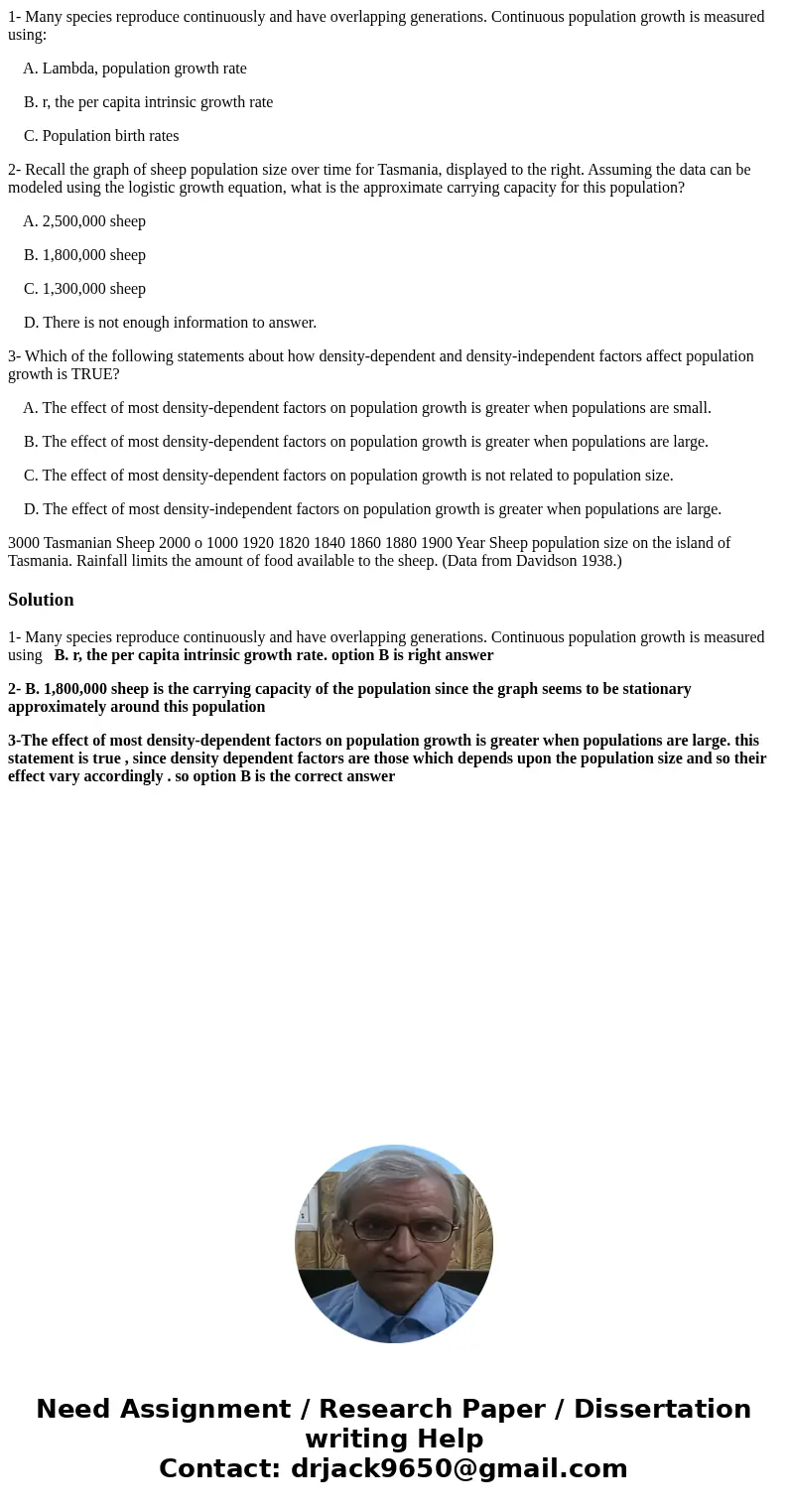1 Many species reproduce continuously and have overlapping g
1- Many species reproduce continuously and have overlapping generations. Continuous population growth is measured using:
A. Lambda, population growth rate
B. r, the per capita intrinsic growth rate
C. Population birth rates
2- Recall the graph of sheep population size over time for Tasmania, displayed to the right. Assuming the data can be modeled using the logistic growth equation, what is the approximate carrying capacity for this population?
A. 2,500,000 sheep
B. 1,800,000 sheep
C. 1,300,000 sheep
D. There is not enough information to answer.
3- Which of the following statements about how density-dependent and density-independent factors affect population growth is TRUE?
A. The effect of most density-dependent factors on population growth is greater when populations are small.
B. The effect of most density-dependent factors on population growth is greater when populations are large.
C. The effect of most density-dependent factors on population growth is not related to population size.
D. The effect of most density-independent factors on population growth is greater when populations are large.
3000 Tasmanian Sheep 2000 o 1000 1920 1820 1840 1860 1880 1900 Year Sheep population size on the island of Tasmania. Rainfall limits the amount of food available to the sheep. (Data from Davidson 1938.)Solution
1- Many species reproduce continuously and have overlapping generations. Continuous population growth is measured using B. r, the per capita intrinsic growth rate. option B is right answer
2- B. 1,800,000 sheep is the carrying capacity of the population since the graph seems to be stationary approximately around this population
3-The effect of most density-dependent factors on population growth is greater when populations are large. this statement is true , since density dependent factors are those which depends upon the population size and so their effect vary accordingly . so option B is the correct answer

 Homework Sourse
Homework Sourse